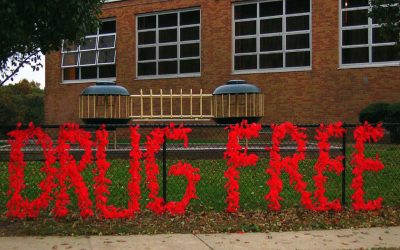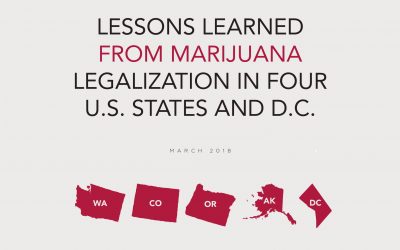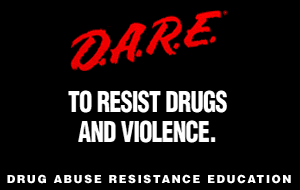
D.A.R.E. America is a non-profit organization dedicated to our mission of “Teaching students good decision-making skills to help them lead safe and healthy lives.” As taught in our curricula, we believe it is neither safe nor healthy for students and all children under the age of 18 to use marijuana. The science on this subject is clear…the use of marijuana by youth has dangerous and unhealthy consequences on many levels.
Additionally, several studies have documented the significant negative consequences of legalization including:
- Increased illegal use of marijuana by minors;
- Increased traffic accidents and traffic deaths as a result of driving under the influence of marijuana;
- Increased emergency room visits with marijuana related overdoses;
- Increased number of hospitalizations from the use of marijuana;
- Increased risk of addiction and use of other more lethal drugs. The National Institutes of Health reports that 1 out of every 6 adolescents who try the drug will develop an addiction.
Further, while the use of marijuana may be legal in a few states, it is still not legal anywhere in the United States under Federal law. For these reasons and others, we are opposed to the legalization of marijuana.
2. What does a D.A.R.E. officer tell his/her students when asked about legalization of marijuana?
Each and every day, today’s students are bombarded with messages requiring them to make decisions related to the use of drugs and alcohol, bullying and cyber bullying, tobacco, and internet safety just to name a few of the high risk behaviors they see on their smartphones. D.A.R.E. officers present an evidence-based curricula, keepin’ it REAL, developed by Penn State University that is based upon Socio-Emotional Learning Theory. The keepin’ it REAL elementary and middle school curricula provide students with the knowledge, skills, and tools to make decisions for safe and healthy living related to these potentially high risk behaviors and circumstances. When asked about the legalization of marijuana, the D.A.R.E. officer’s first response is under no circumstance is it legal for anyone under the age of 18 to use marijuana.
3. If marijuana is legal in several states, then why is it bad for students?
Just because something is legal doesn’t mean it’s good for you. Cigarettes are legal and science clearly shows that it is unhealthy and leads to heart disease and cancer. Prescription drugs are legal when prescribed by a physician and used only as prescribed. No one else, however, should ever use prescription drugs that were prescribed for another individual. Most importantly, though, many scientific studies have shown that marijuana use by underage youth has many negative consequences including impaired brain development and other detrimental health effects.
4. What is D.A.R.E.’s position on marijuana as a gateway drug?
After decades of studies, the research is still inconclusive regarding whether or not marijuana is a gateway drug and, if so, what other variables may contribute to an individual who has repeatedly used marijuana being drawn to experiment or use other types of illicit drugs. D.A.R.E.’s curricula focus on providing students with the knowledge, skills, and tools to make decisions for safe and healthy living and the avoidance of high risk behaviors. Without question, a student’s use of marijuana is a high risk behavior with unhealthy consequences.
5. What is the relationship between marijuana legalization and the current opioid epidemic?
The legalization of marijuana increases availability of the drug, diminishes the perception of harm related to its use, and increases acceptability of its use. Research has evidenced marijuana use is positively correlated with alcohol use and cigarette use, as well as illegal drugs like cocaine and methamphetamine.
Certainly not everyone who uses marijuana will transition to using heroin or other drugs, but it does mean that people who use marijuana also consume more, not less, legal and illegal drugs than do people who do not use marijuana. It has been reported people who are addicted to marijuana are three times more likely to be addicted to heroin.
Xylazine….Worse than Fentanyl
Xylazine….Worse than Fentanyl Increasingly around the country, the animal tranquilizer xylazine — known by street names like “tranq,” “tranq dope” and “zombie drug” — is being used as an additive by drug dealers of illicit fentanyl laced opioids, making its impact...
Fentanyl FAQ and Talking Points
Fentanyl Have a conversation with students or your children. Simply telling teens to not do drugs is not the most effective way to discuss fentanyl and other opioid drug risks. The teens that are the most at risk may just tune this warning out if they feel like...
Surgeon General Sounds Alarm On Risk Of Marijuana Addiction And Harm
At a time when more than 30 states and the District of Columbia have legalized the use of marijuana for either medical or recreational use, the U.S. surgeon general says no amount of the drug is safe for teens, young adults and pregnant women.
“While the perceived harm of marijuana is decreasing, the scary truth is that the actual potential for harm is increasing,” Surgeon General Jerome Adams said…
Adolescent Drug Abuse Prompts Improved School Prevention Programs
To fight adolescent drug abuse, schools across the U.S. have been striving to implement more effective drug abuse prevention and education programs. While the U.S. government has invested millions of dollars into producing anti-drug TV ads, the majority of them have...
Leading Marijuana Policy Group Releases Study on Impact of Legalization
COMPREHENSIVE STUDY FINDS MARIJUANA LEGALIZATION DRIVES YOUTH USE, CRIME RATES, THE BLACK MARKET, AND HARMS COMMUNITIES OF COLOR Dramatic Increases in Fatal Drugged Driving Crashes, Workplace Accidents, Arrest Rates, Black Market Activity in States That Have Legalized...
OUR VIEW: A community problem, and it’s in need of a community solution
Editorial from Christian County Headliner News: A community problem, and it’s in need of a community solution. Children need to be taught about drugs, alcohol and cigarettes. They need to know how it affects them. They need to know that just because it’s legal, that doesn’t mean it’s good for your body.
D.A.R.E. Plans to Address Opioid Epidemic in New Lesson Program
Drug Abuse Resistance Education, better known as D.A.R.E., plans to launch an opioid-use prevention lesson program at the beginning of 2018. The widely known anti-drug abuse education program that gained momentum in the 1980s and 1990s will be reviewing educational...
The new D.A.R.E.: Decision-making skills instead of drug lectures
Drug Abuse Resistance Education, or D.A.R.E., the school-based substance use prevention program delivered by police officers, has quietly changed into a completely different curriculum. Instead of spending 45 minutes lecturing students about drugs — which has proven...
D.A.R.E. High School Curricula
EVIDENCE-BASED. IMPACTFUL. EFFECTIVE. D.A.R.E.'s high school curricula program consists of three distinct modules that offer educators and law enforcement flexible and cost-effective options for providing students with relevant and timely information and tools to...








